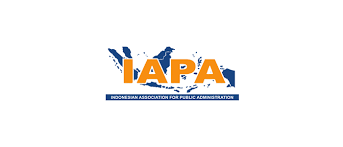Using Animated Video Based on Scientific Approach to Improve Students Higher Order Thinking Skill
Abstract
This research is motivated by the desire to make a change to conventional and monotonous ways of learning by providing variations in science learning for students, where so far learning has been fixated on old media that are not relevant to the demands of innovation in education namely skill-based learning in the 21st century and the industrial revolution 4.0. The purpose of this study was to determine the effect of the use of video animation based on a scientific approach to the high-level thinking skills of students. The sample in this study were students majoring in Primary teacher education programs in science education, which were determined by cluster random sampling techniques. The study used an experimental methodology with a pretest-posttest control design. (3) T-test results from the results of the analysis of high-level thinking skills scores of students showed a significance value of 0.002 <0.05, proving that the final ability of the experimental class group was significantly higher than the control class. This indicates that the use of scientific animated video approaches influences students' high-level thinking skills.
References
Anjarsari, P. (2014). Pentingnya Melatih Keterampilan Berpikir Dalam Pembelajaran IPA SMP. Workshop Pengembangan LKS IPA Berpendekatan Guided-Inquiry untuk Mengembangkan Thinking Skills dan Sikap Ilmiah Siswa” 23 Agustus 2014
Asari,S., Husniah, R., Ma’rifah, U., Anwar, A. (2019). Fostering Students’ High Order Thinking Skills through the Use of Interpretation Cards. International Journal of Education & Literacy Studies, 7(4), 17-22
Barratt, C. (2014). Higher Order Thinking And Assessment. International Seminar on Current issues in Primary Education: Prodi PGSD Universitas Muhammadiyah Makasar.
Bogar, Yurdagul. (2019). Synthesis Study on Argumentation in Science Education. International Education Studies, 12(9), 1-14
Brookhart, S. M. (2010). How to Assess Higher-Order Thinking Skill in Your Classroom, Virginia: ASCD
Chokchai, Oranit & Pupat, Phadungchai. (2018). A Student's Scientific Mind: A Confirmatory Factor Analysis. Malaysian Journal of Learning and Instruction, 15(2),1-31
Gao, C. (2016). Cultivating Students' Critical Thinking Ability through Simplified Modal United Nations Conference. English Language Teaching, 9(3), 68-73
Hwang, I., Tam, M., Lam, S. L., & Lam, P. (2012). Review of use of animation as a supplementary learning material of physiology content. The Electronic Journal of E-Learning, 10(4), 368–377
Ichsan, I.Z., Sigit, D. V., Miarsyah, M., Ali, A., Arif, W.P., Prayitno, T.A. (2019). HOTS-AEP: Higher Order Thinking Skills from Elementary to Master Students in Environmental Learning. European Journal of Educational Research, 8(4), 935-942
Jensen TIM. (2019). Jensen's Scientific Approach' to Religion Education. Center for Educational Policy Studies Journal, 9(4), 31-51
Kabatas Memis, E.& Ezberci Cevik, E. (2017). Examination of students’ small groupsdiscussion in argumentation process: Scientific and socio-scientific issues. Journal of Education in Science, Environment and Health (JESEH), 3(2), 126-137
Kemendikbud.(2014). Permendikbud No.103 tentang pedoman pelaksanaan pembelajaran. Jakarta: Kemendikbud
Krathwohl, D. R., Bloom, B. S., Masia, B. B. (1964). Taxonomy of Educational Objectives. New york: Longman
Lederman N.G., Antink, A., & Bartos, S. (2012). Nature of Science, Scientificinquiry, and Socio-Scientific Issues Arising from Genetics: A Pathway to Developing a Scientifically Literate Citizenry. Science & Education, 2(3), 285-302
M Miftah. Fungsi, dan Peran Media Pembelajaran Sebagai Upaya Peningkatan Kemampuan Belajar Siswa. Jurnal kwangsan, 1(2), 95-105
Muchlas. (2018). Developing an Online Learning Media Using Smartphone for the Electrical Machinery Course. TOJET: The Turkish Online Journal of Educational Technology , 17(1), 62-68
Nitko, A.J. (1996). Educational Assessment of Student. Englewuood Cliffs: Meril
Rayin, J & Tilchin, O. (2016). The Impact of Adaptive Complex Assessment on the HOT Skill Development of Students. World Journal of Education, 6(2), 12-19
Repko, A. F. 2008. Interdisciplinary Research. Los Angeles: Sage Publications.
Resnick, L.B. (1987). Education and Learning to Think. Washington, D.C: National Academy Press.
Rohaeti, E. E., Bernard, M., Primandhika, R. B. (2019). Developing Interactive Learning Media For School Level Mathematics Through Open-Ended Approach Aided By Visualbasic Application For Excel. Journal on Mathematics Education, 10(1), 59-68
Sakin, Ahmet. (2020). Preschool Pre-Service Teachers' Scientific Attitudes for Sustainable Professional Development. International Journal of Curriculum and Instruction, 12(special issue), 16-33
Suriasumantri. (1987). Filsafat Ilmu: Sebuah Pengantar Populer. Jakarta: Sinar harapan
Yusuf, M., Amin, M., N Nugrahaningsih. (2017). Developing of instructional media-based animation video on enzyme and metabolism material in senior high school. Jurnal Pendidikan Biologi Indonesia, 3(3), 254-257
Copyright (c) 2020 Indonesian Journal of Social Research (IJSR)

This work is licensed under a Creative Commons Attribution-ShareAlike 4.0 International License.
The Authors submitting a manuscript do so on the understanding that if accepted for publication, copyright publishing of the article shall be assigned/transferred to Indonesian Journal of Social Research (IJSR) Universitas Djuanda as Publisher of the journal. Upon acceptance of an article, authors will be asked to complete a 'Copyright Transfer Agreement'. An e-mail will be sent to the corresponding author confirming receipt of the manuscript together with a 'Copyright Transfer Agreement' form by online version of this agreement.
Indonesian Journal of Social Research (IJSR) Universitas Djuanda, the Editors and the Editorial Board make every effort to ensure that no wrong or misleading data, opinions or statements be published in the journal. In any way, the contents of the articles and advertisements published in the Indonesian Journal of Social Research (IJSR) Universitas Djuanda are sole and exclusive responsibility of their respective authors and advertisers.
Remember, even though we ask for a transfer of copyright, our journal authors retain (or are granted back) significant scholarly rights as mention before.
The Copyright Transfer Agreement (CTA) Form can be downloaded here: Copyright Transfer Agreement-IJSR 2020
The copyright form should be signed electronically and send to the Editorial Office e-mail below:
Dr. Rasmitadila, M.Pd (Editor-in-Chief)
Universitas Djuanda
Jl. Tol Jagorawi No.1, Ciawi, Kec. Ciawi, Bogor, Jawa Barat 16720
Website: http://journal.unida.ac.id/index.php/IJSR/index
Email: ijsr@unida.ac.id





4.png)



